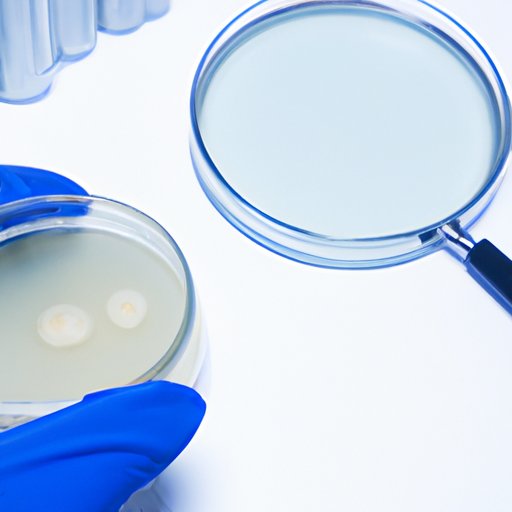
Introduction
Yeast infections are a common problem experienced by women, but men are not entirely immune to it as well. These infections can be just a discomfort or escalate into a severe condition that may cause significant pain. The cause of a yeast infection is not restricted to one factor, and it is extremely crucial to understand the connection between antibiotics and yeast infections. This article will explain the link between antibiotics and yeast infections, how antibiotics increase your risk of developing yeast infections, and practical tips on how to avoid the infection while using antibiotics.
Unpacking the Link Between Antibiotics and Yeast Infections: What You Need to Know
Before we dive into the connection between antibiotics and yeast infections, it is important to understand what these terms mean. Yeast infections are caused by the overgrowth of fungi in the body, and antibiotics are medications used to fight bacterial infections in the body.
Antibiotics and Yeast Infections: Understanding the Connection
The link between antibiotics and yeast infections is that antibiotics upset the delicate balance of bacteria in the body. Antibiotics eliminate most of the bacteria in the body that cause the infection, including good bacteria that keep the body stable. The absence of these good bacteria creates the perfect breeding ground for fungi like Candida to grow uncontrollably.

How Antibiotics Can Increase Your Risk of Developing Yeast Infections
One of the significant factors that increase the chances of getting a yeast infection after antibiotics is the duration and frequency of the antibiotic treatment. Long-term and frequent use of antibiotics increases the chances of contracting a yeast infection by killing more of the beneficial bacteria in the body that keep Candida levels under control.
The Science Behind Yeast Infections from Antibiotics
The science behind yeast infections caused by antibiotics is that antibiotics are designed to kill bacteria in the body. In doing so, antibiotics kill both harmful and beneficial bacteria. Good bacteria in the body create a natural defense mechanism against fungi like Candida. Once the good bacteria are eliminated, Candida and other fungi can multiply and infect the body.
Preventing Yeast Infections Caused by Antibiotics: A Practical Guide
Yeast infections caused by antibiotics can be prevented. One way to do this is by taking probiotics while on antibiotics to replace the good bacteria that are eliminated during antibiotic treatment. It is also important to avoid unnecessary antibiotic treatment. Good hygiene practices like washing hands before handling food, wearing clean clothes, and taking regular showers can also contribute significantly in preventing yeast infections.
The Dos and Don’ts of Treating Yeast Infections Caused by Antibiotics
If a yeast infection has developed as a result of antibiotic treatment, there are different medications that could provide relief. Anti-fungal medications, for instance, can eliminate the Candida causing the infection. It is also essential to avoid certain foods like sugary, yeast-containing products that can aggravate yeast infections.
Antibiotics and Yeast Infections: Common Myths and Misconceptions
There are several common myths around antibiotics and yeast infections. One myth asserts that antibiotics cause yeast infections by killing bacteria. The truth is, antibiotics indirectly lead to yeast infections by killing the good bacteria that limit the growth and spread of the fungus. It is important to separate fact from fiction to accurately address symptoms related to yeast infections caused by antibiotics.
Conclusion
In conclusion, the connection between antibiotics and yeast infections is significant. The frequent and long-term use of antibiotics can completely eliminate good bacteria in the body leading to uncontrollable growth of fungi that result in a yeast infection. It is important to be aware of this connection and take preventative measures to avoid a yeast infection related to antibiotic treatment. Understanding common myths, debunking misconceptions, knowing best practices on prevention, and following the appropriate treatment when an infection arises are key in managing and addressing yeast infections caused by antibiotics.




